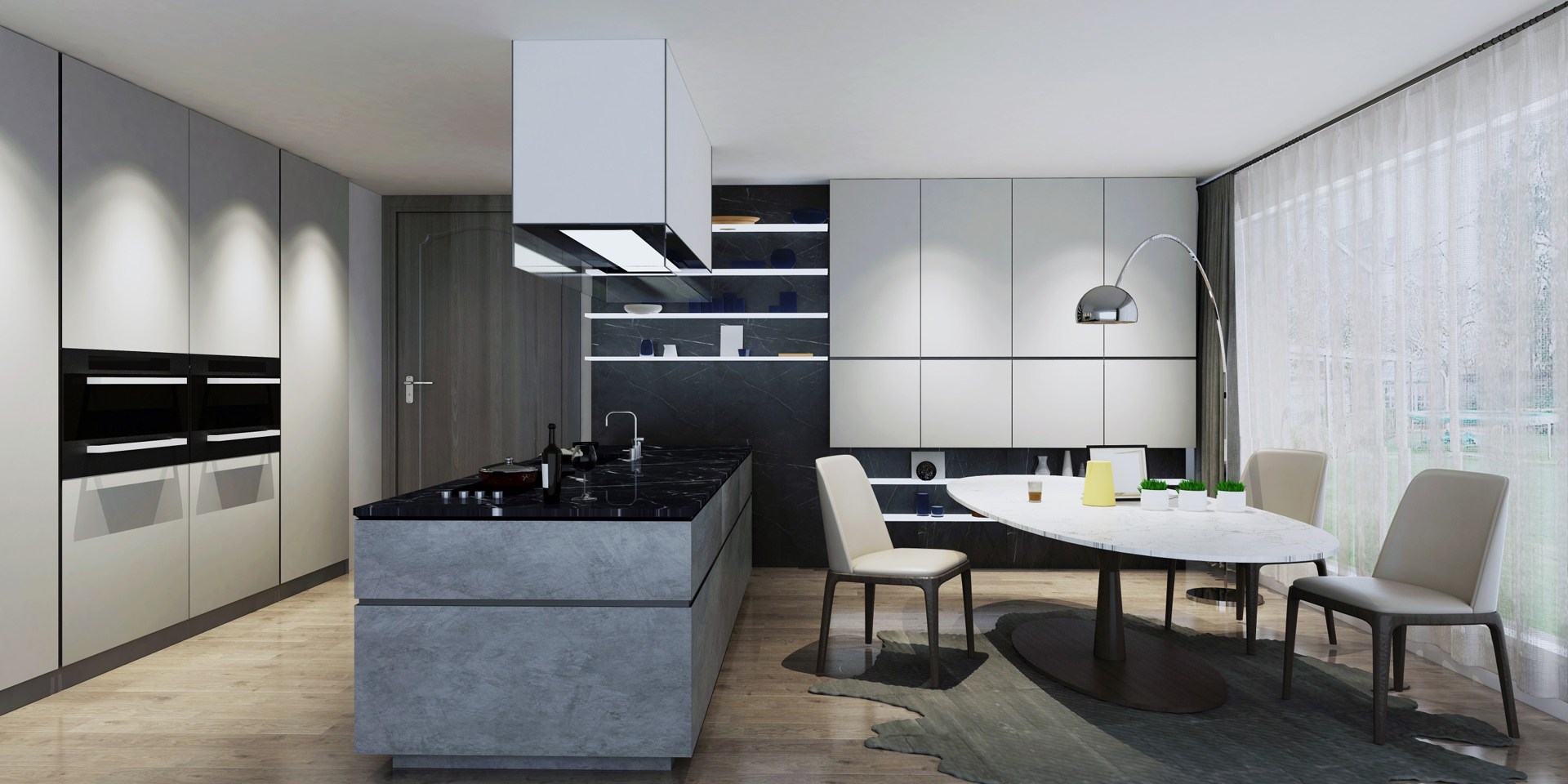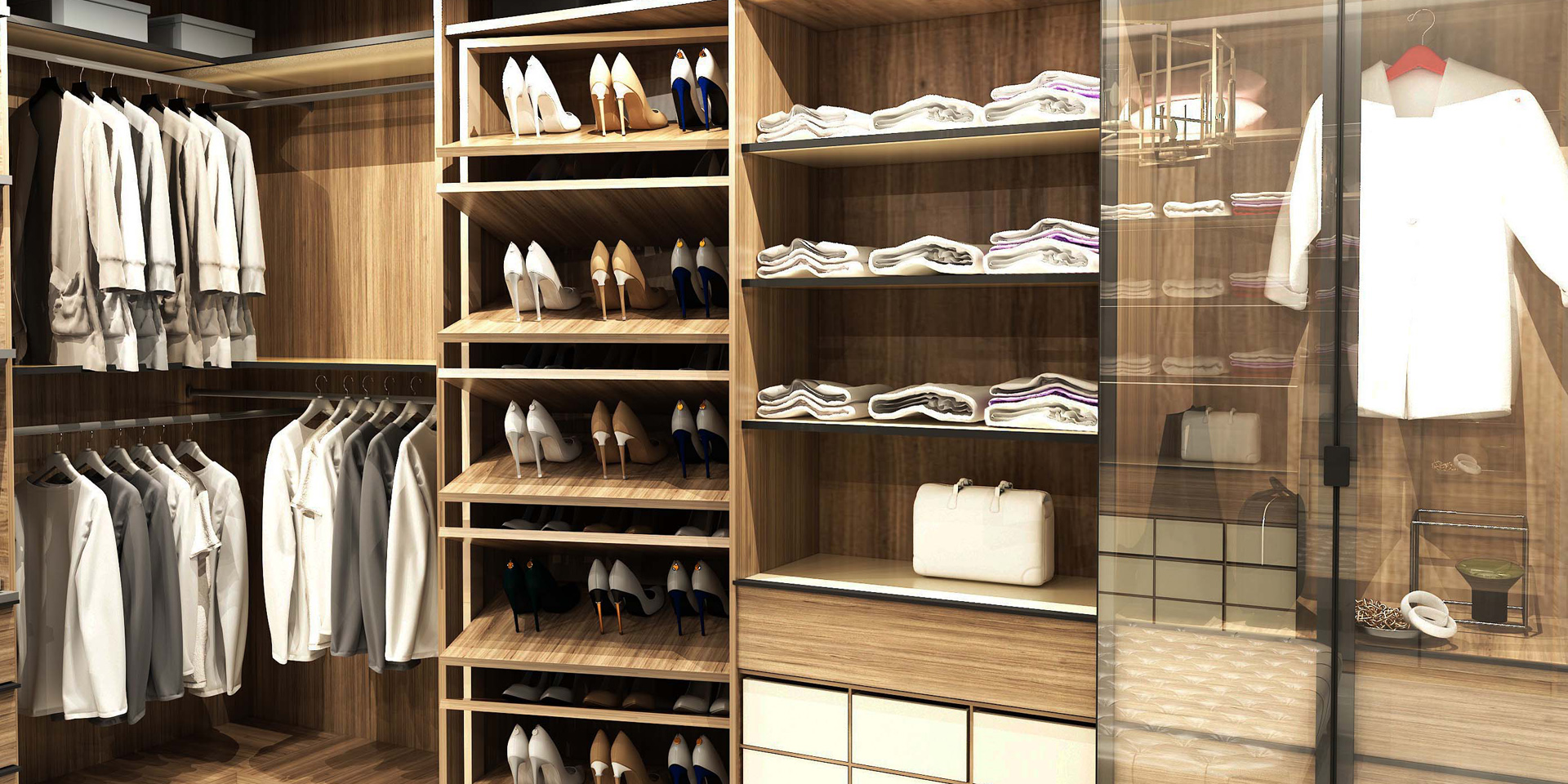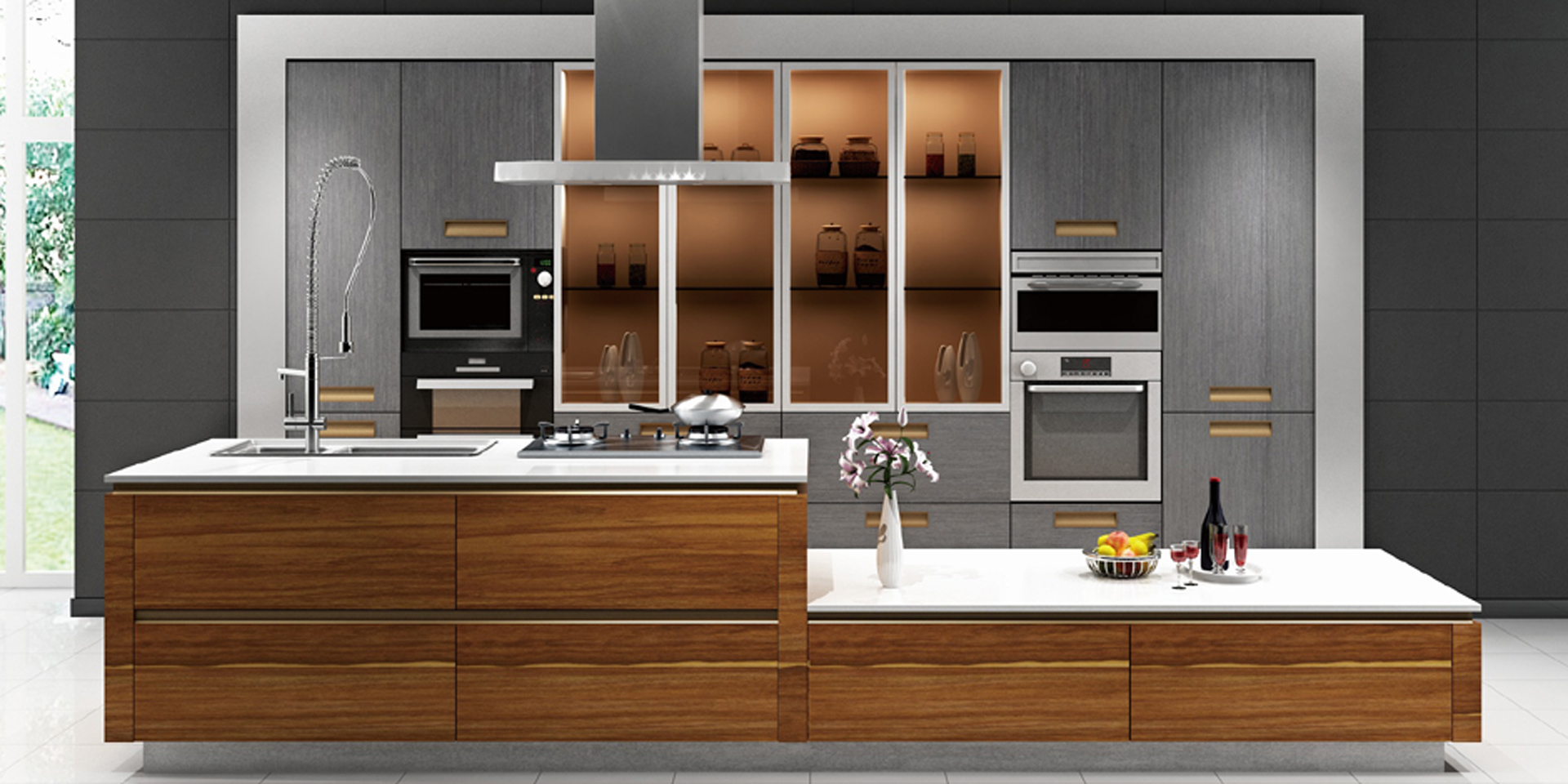
Melamine kitchen cabinets are made by heat-sealing a substrate (pressed wood, medium density fiberboard or plywood) between paper saturated with thermally fused melamine resin. Thermally fused melamine is a combination of melamine and formaldehyde chemically fused together into larger, and some say safer, molecules.
Thermally-fused melamine
The home remodeling industry thrives on shorthand and nicknames. Take melamine, for example. When chemists discuss melamine, they are talking about 1,3,5-Triazine-2,4,6-triamine, also called Cyanuramide. As such, that form of melamine is thought to be harmful if ingested.
That is not the melamine that makes up melamine kitchen cabinets. Melamine cabinets have melamine and formaldehyde (also known to be risky) chemically bonded together in the resin that helps form the cabinets.
Tony O’Driscoll, professional polymer chemist and woodworking hobbyist, reassures melamine and formaldehyde in cabinets are not harmful for consumers or woodworkers alike. The melamine used in kitchen cabinetry is really called thermally fused melamine, or TFM.
Anatomy of a kitchen cabinet
The Composite Panel Association says TFM uses the resin to saturate decorative paper that is heat-bonded to a substrate. Because melamine hardens when heated, the surface of the decorative cabinet is scratch resistant, colorfast and highly durable.
The actual TFM is only the surface on top of pressed wood, medium density fiberboard (MDF), or plywood. The TFM-saturated paper can be printed in any color or pattern before being heat-sealed to the substrate.
All these hues and designs makes melamine kitchen cabinets highly desirable by kitchen designers, remodelers and savvy homeowners.


Pros and cons
Knowing melamine in cabinets is not a safety hazard, other pros and cons must be considered. Melamine does not split like organic wood. Surfaces of TFM are easy to clean, which requires no painting or staining. This wears well, with little stress over cleaning.
Materials used in melamine kitchen cabinets can come from sustainable-growth forests and recycled wood scraps. Because TFM is a printed surface paper, many consumers prefer the melamine kitchen cabinets to real wood because no end grains (often less desirable) will ever be visible. TFM cabinets are usually far less expensive than genuine wood cabinets.
Melamine is not a perfect material, however. Melamine will not split but can shatter. The edge of a countertop or cabinet can break off, revealing rough wood fiber inside. Depending on the grade of substrate, some melamine kitchen cabinets do not hold screws and anchors well.
The substrate will also readily absorb water, causing it to swell and change shape. This can make melamine kitchen cabinets challenging near the kitchen sink or wet bar. Since the particle board does not hold screws well, cabinet hinges will eventually loosen, leading to sagging doors. Melamine also weighs significantly more than real wood or plywood cabinets.
Repairing melamine cabinets
Melamine can break. Its TFM top layer can peel off or chip. At some point, repairs may be needed to melamine kitchen cabinets. For peeling TFM, small areas can be glued with small amounts of a glue chosen for bonding to the MDF or other substrate. Use a cotton swab to gently force the glue under the peeling melamine.
For larger areas that have peeled back, use cardboard tubes to gently lift and hold the TFM off the substrate, then use plenty of glue to provide a firm hold. For both small and large repairs, lay wax paper over the TFM surface and clamp or weight it.
For chips and larger breaks, fill the cavity with like-colored wood filler, sand the area after the filler dries, and touch up with melamine paint laminate finish. Consider using an enamel latex paint over primer.
Homeowners seeking to remodel a kitchen can save money by using relatively inexpensive melamine for the kitchen cabinets, reserving other funds for strong accents like quartz countertops or an induction cooktop.
Hangzhou Rebon Cabinets Co., Ltd
ADD: No. 99 Qingliu South Road, Jingjiang, Xiaoshan, Hangzhou, Zhejiang, China
TEL: +86-571-82193086
MB: +8613732255713
FAX: +86-571-82998655
E-mail: reboncabinets@chinarebon.com